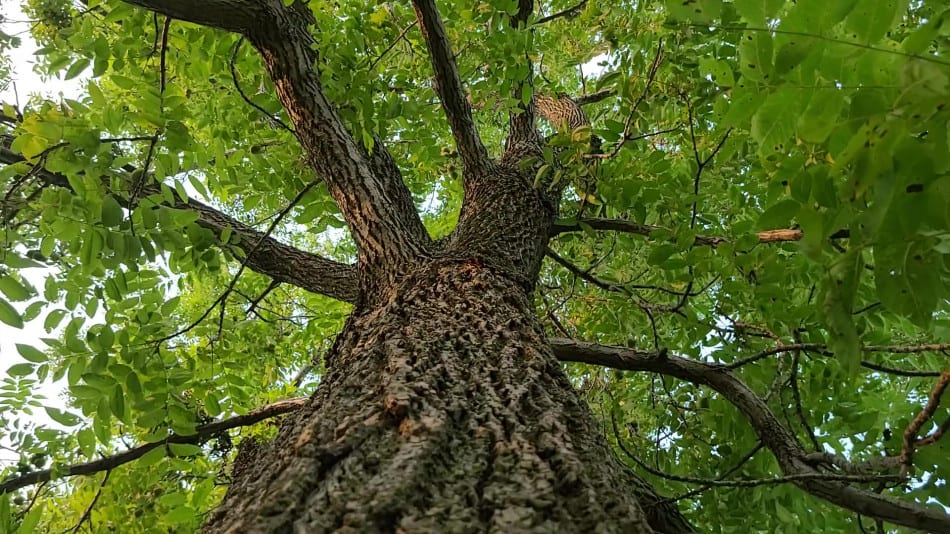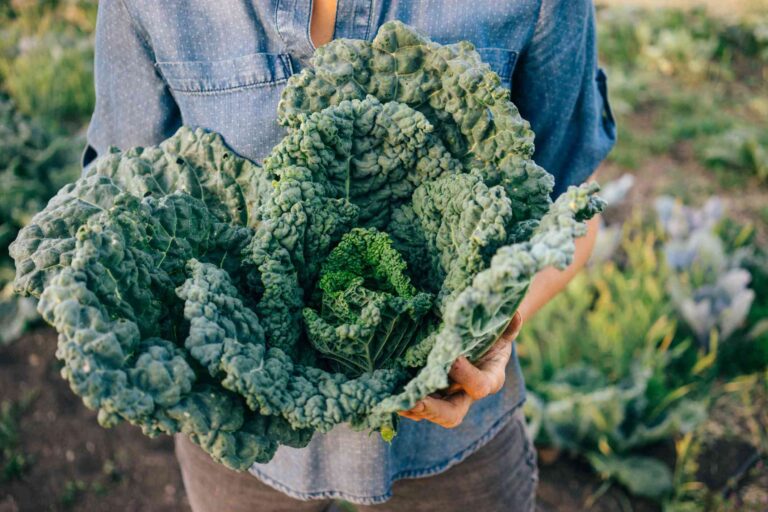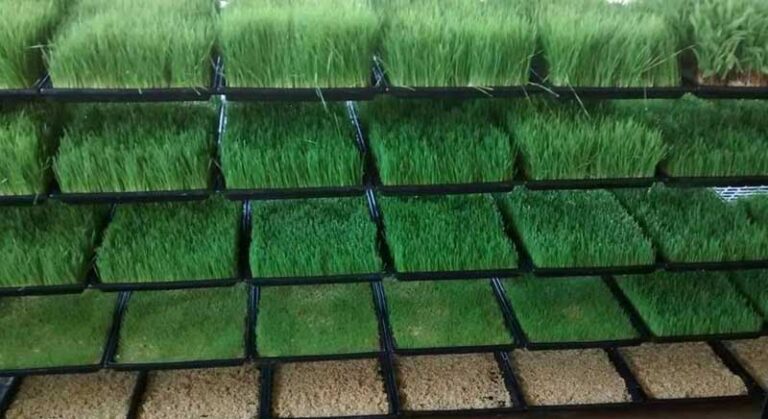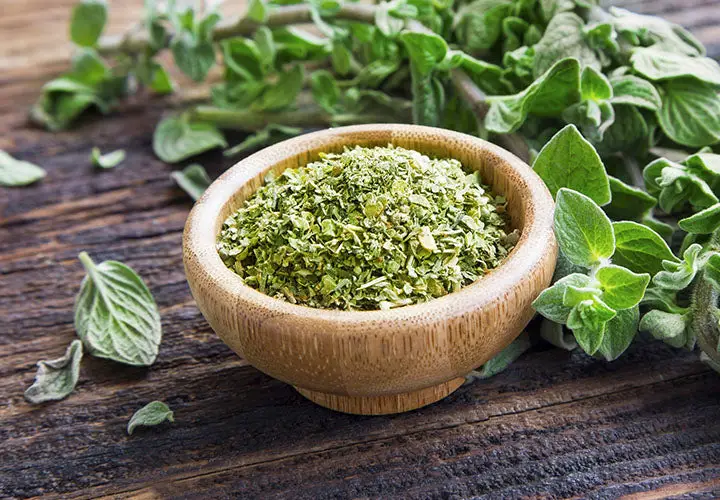Black Walnut Tree: Food with a Dark Side
Did you know that the black walnut tree, a staple of American forests, has a dark side? While its nuts are a tasty treat, the tree’s roots can release a toxin called juglone that can harm other plants and trees. This fascinating fact is just the tip of the iceberg when it comes to the black walnut tree’s complex relationship with its environment and human use.
In this blog post, we’ll delve into the world of the black walnut tree, exploring its benefits and drawbacks, its history in the United States, and its cultural significance. We’ll also examine the latest research on the tree’s medicinal properties and its potential as a sustainable resource.
Whether you’re a nature enthusiast, a foodie, or a history buff, this post is sure to provide you with a fresh perspective on a beloved American tree. So grab a handful of black walnuts and join us on this journey of discovery!
Table of Contents
The Nutritional Value of Black Walnuts
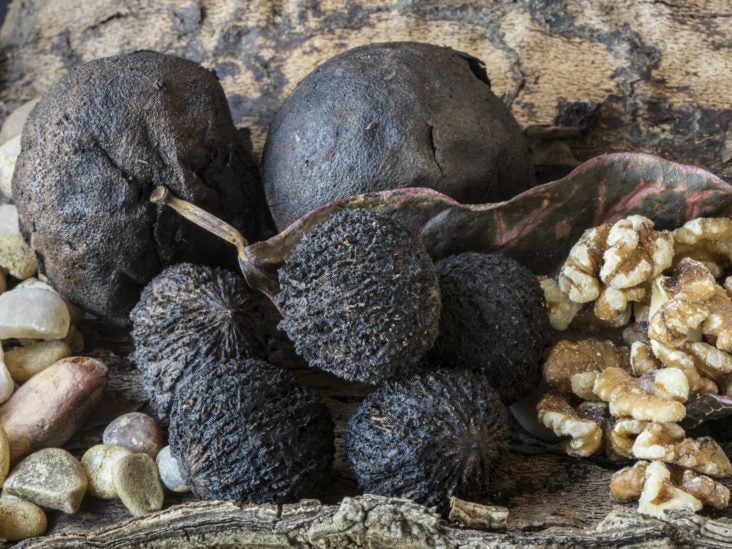
- Black walnuts are rich in antioxidants, polyunsaturated fats, and phenolic compounds, providing numerous health benefits like reducing the risk of cancer, heart disease, and diabetes.
- They contain arginine, which can lower blood pressure, and phytosterols that help reduce cholesterol levels, promoting heart health.
- Black walnuts have ellagitannins with anti-inflammatory and free-radical-fighting properties, potentially preventing neurodegenerative diseases like Parkinson’s and Alzheimer’s.
- Studies suggest that black walnuts may have anticancer effects, aid in weight loss, and possess antibacterial properties against harmful bacteria like Listeria and Salmonella.
- With high protein content, omega-3 fatty acids, and essential nutrients like manganese, black walnuts are considered a superfood with benefits for metabolism, bone health, and cardiovascular protection.
The dollowing table explains about the nutritional value of black walnuts:
| Nutrient | Value per 100g |
|---|---|
| Calories | 654 kcal |
| Protein | 24 g |
| Fat | 65 g |
| Carbohydrates | 14 g |
| Fiber | 6 g |
| Calcium | 61 mg |
| Iron | 2.9 mg |
| Magnesium | 201 mg |
| Phosphorus | 523 mg |
| Potassium | 523 mg |
| Sodium | 2 mg |
| Zinc | 3.1 mg |
| Vitamin C | 1.3 mg |
| Thiamine (B1) | 0.3 mg |
| Riboflavin (B2) | 0.1 mg |
| Niacin (B3) | 1.1 mg |
| Vitamin B6 | 0.3 mg |
| Folate (B9) | 98 µg |
| Vitamin E | 0.7 mg |
| Vitamin K | 2.7 µg |
Note: Nutritional values are approximate and may vary based on factors such as cultivation, processing, and storage.
The combination of these essential nutrients in black walnuts makes them a valuable addition to a balanced diet. Incorporating black walnuts into your meals or enjoying them on their own as a snack can provide numerous health benefits and contribute to overall well-being. So, let’s explore further the culinary uses of black walnuts and how they add a unique flavor profile to traditional dishes.
Culinary Uses of Black Walnuts in Traditional Dishes
Black walnuts, known for their distinct and robust flavor, have been a staple ingredient in traditional dishes for centuries. These flavorful nuts add a rich and earthy taste to a variety of culinary creations, making them a beloved ingredient among chefs and cooking enthusiasts.
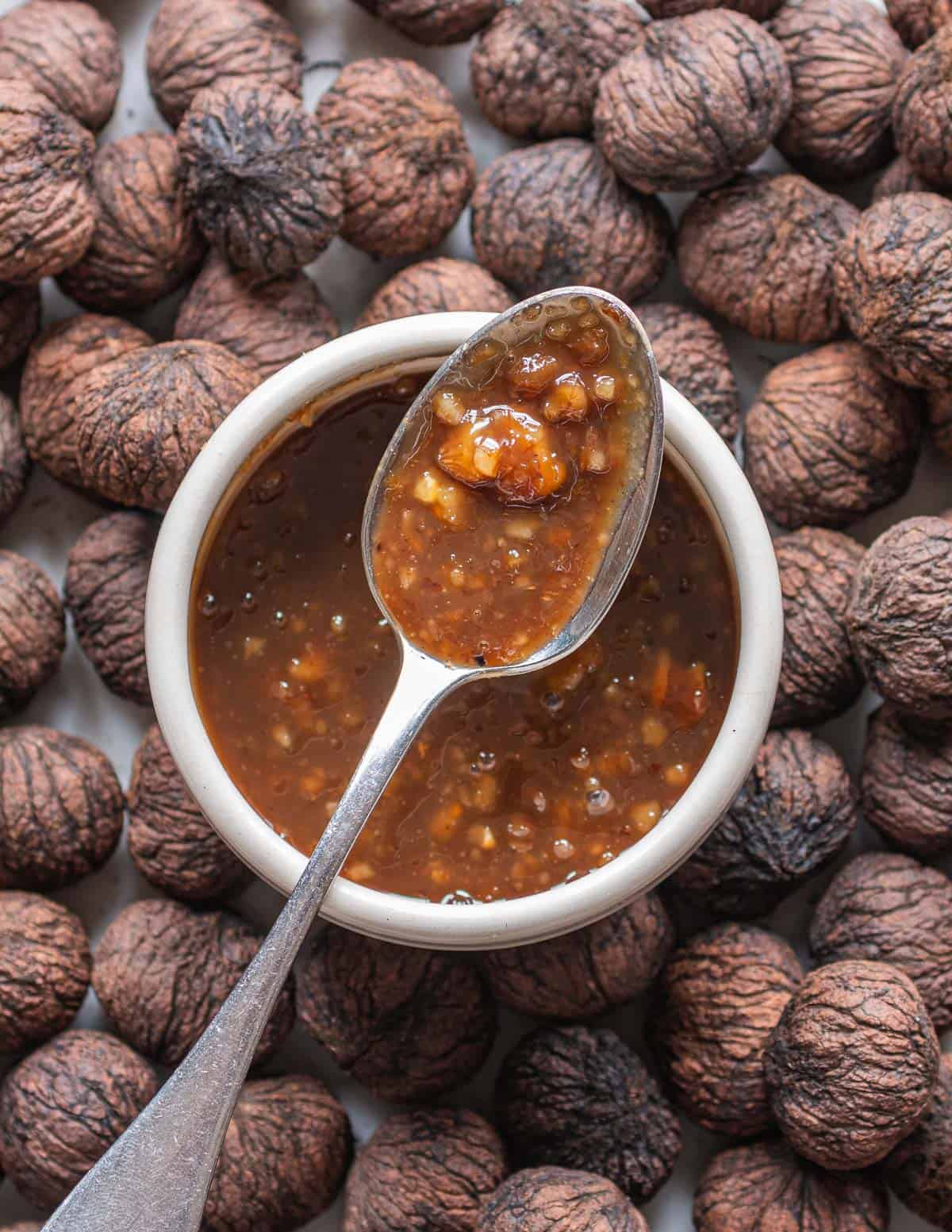
- Baked Goods:
- Black walnuts enhance the flavor of cookies, cakes, and bread.
- They add a nutty intensity to brownies and banana bread.
- Savory Delights:
- Pair well with meats:
- Try black walnut-crusted chicken or pork.
- Add crunch and nuttiness to salads.
- Pair well with meats:
- Nutritional Benefits:
- Rich in healthy fats, protein, and fiber.
- Contains antioxidants and essential minerals.
- Creative Recipes:
- Explore various dishes:
- From appetizers to main courses.
- Unleash your culinary creativity!
- Explore various dishes:
As we dive deeper into exploring the culinary uses of black walnuts in traditional dishes, we uncover an array of creative and delicious recipes. Whether you are a seasoned chef or a passionate home cook, these versatile nuts offer a world of possibilities in the culinary realm. With their distinct flavor profile and nutritional benefits, black walnuts are truly a treat for the taste buds.
The Unique Flavor Profile of Black Walnuts
Black walnuts possess a distinct and unique flavor profile that sets them apart from other types of nuts. Their taste is often described as rich, earthy, and slightly bitter, with a hint of sweetness. This flavor profile can add depth and complexity to a variety of culinary creations.
Whether used as a primary ingredient or as a topping, black walnuts bring a distinct and satisfying taste that is sure to impress even the most discerning palates.
Black Walnut Tree’s Role in Traditional Medicine
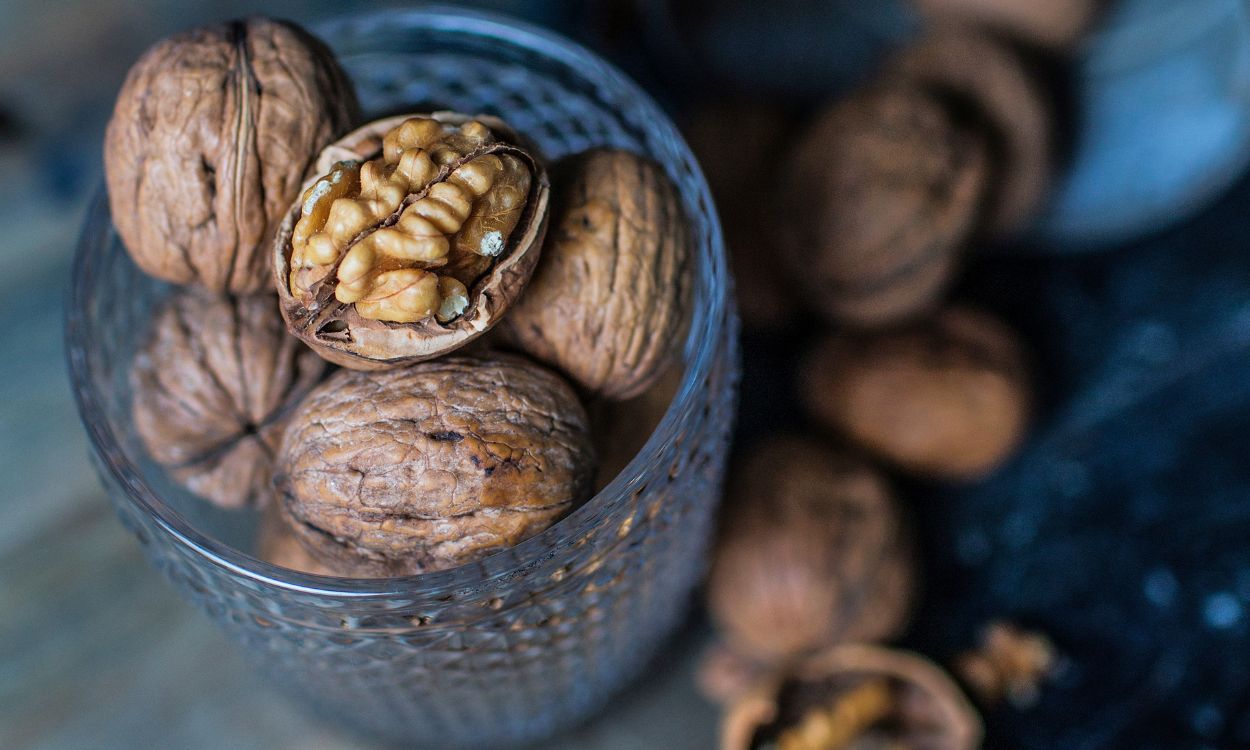
Black walnut trees have long been recognized for their significant role in traditional medicine. Various parts of the tree, including the bark, leaves, and nuts, have been utilized for their potential healing properties. In particular, the black walnut hull, which is the outer covering of the nut, has been traditionally used for its medicinal benefits.
- Anti-Inflammatory Properties:
- Black walnut hull contains tannins with anti-inflammatory effects.
- Useful for managing skin conditions like eczema and psoriasis.
- Astringent Properties:
- The tannins act as astringents.
- Effective for treating wounds, cuts, and minor infections.
In summary, black walnut hull extract has been traditionally used for its healing properties, particularly in skincare applications. 🌿🌰
Potential Health Benefits of Consuming Black Walnuts
Black walnuts not only add a distinct taste and crunch to culinary dishes, but they also pack a punch when it comes to potential health benefits.

- Heart Health Promotion:
- Black walnuts are rich in omega-3 fatty acids, which support cardiovascular health.
- Consuming them may help reduce the risk of heart diseases.
- Antioxidant Power:
- High levels of polyphenols and flavonoids in black walnuts act as antioxidants.
- These compounds protect the body from free radical damage.
- Anti-Inflammatory Properties:
- Compounds like juglone and tannins found in black walnuts have anti-inflammatory effects.
- They may help reduce inflammation markers, potentially benefiting conditions like arthritis and certain cancers.
- Nutrient Boost:
- Black walnuts provide protein, fiber, manganese, and magnesium.
- These nutrients are essential for healthy bones, muscles, and nerves.
- Moderation and Consultation:
- While promising, further research is needed to fully understand black walnuts’ impact on health.
- Incorporate them into a balanced diet, but consult a healthcare professional for personalized advice.
In summary, black walnuts offer a tasty and nutritious addition to your meals, but always consider moderation and professional guidance. 🌰🍃So, go ahead and enjoy the unique flavor and potential health benefits that black walnuts offer, all while indulging in a culinary treat!
Black Walnut Tree’s Impact on Local Ecosystems
Black Walnut Trees, scientifically known as Juglans nigra, have a significant impact on local ecosystems due to their allelopathic nature.
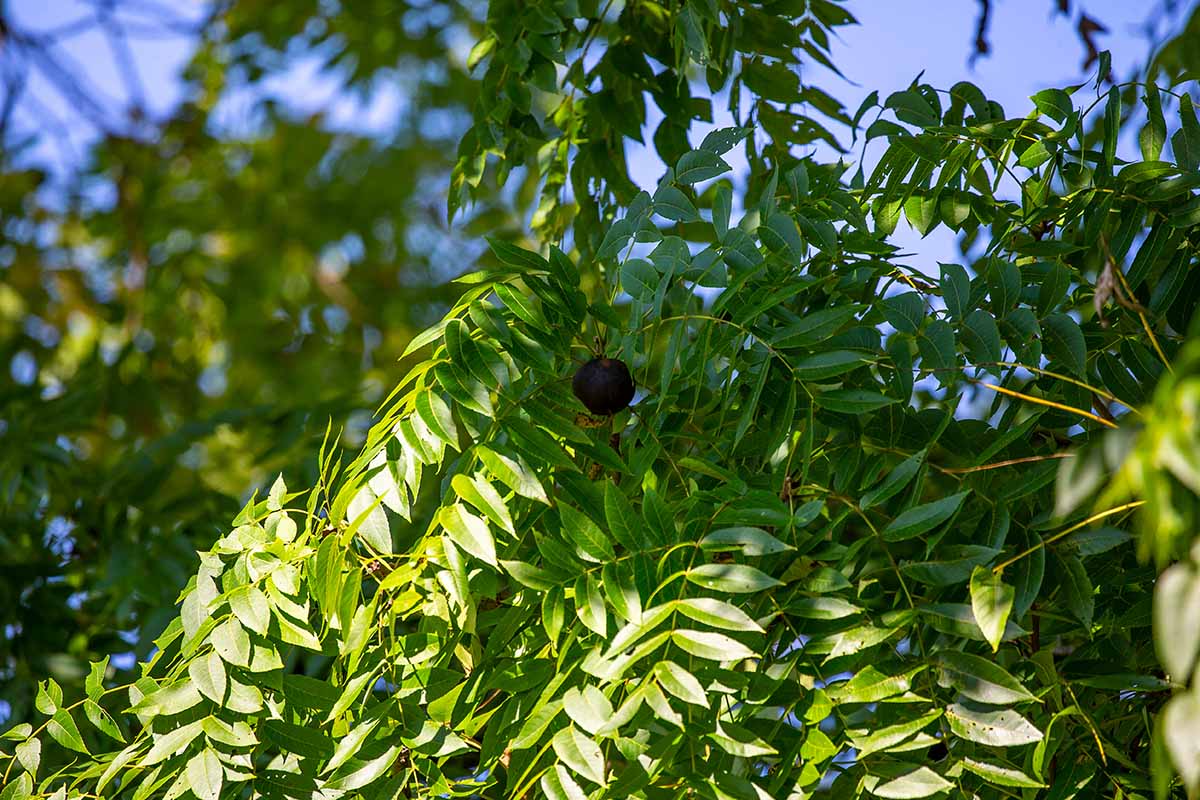
- Allelopathy is the ability of a plant to release chemicals like juglone that can inhibit the growth or germination of nearby plants, creating a specialized ecosystem around Black Walnut Trees.
- Black Walnut Trees can limit competition by affecting the growth of surrounding plants, with some species adapting and thriving in the presence of juglone, while others are negatively impacted by its toxicity.
- The phenomenon known as “Black Walnut allelopathy” highlights the importance of understanding how these trees can influence plant growth in a landscape.
- Beyond allelopathy, Black Walnut Trees provide ecological benefits by offering shade and shelter for wildlife, serving as a food source for animals, and contributing to soil fertility through natural mulch from fallen leaves and twigs.
- The presence of Black Walnut Trees plays a vital role in local ecosystems by shaping plant communities and supporting a diverse range of wildlife, showcasing their significance beyond their allelopathic effects.
Overall, the presence of Black Walnut Trees in local ecosystems plays a crucial role in shaping the plant community and supporting a diverse range of wildlife.
The Challenges of Harvesting Black Walnuts
Harvesting black walnuts can present a number of challenges that require careful consideration and planning.

Here are some key points to consider when collecting these earthy-flavored nuts:
- Tough Outer Shells: Black walnuts have a distinctive tough outer shell that encases the edible kernel. Unlike some other nuts, they don’t easily separate from their husks. To access the inner meat, you’ll need to crack open these sturdy shells. Be prepared for some labor-intensive work during the extraction process.
- Collection Timing: Black walnut trees typically drop their nuts in late summer or early fall. However, the exact timing can vary based on factors like climate and geographical location. To ensure peak ripeness, keep a close eye on the trees. Harvesting too early may result in less flavorful nuts, while waiting too long could lead to overripeness.
- Hulling Challenges: The messiest part of black walnut harvesting is during hulling. The green husks need to be removed before washing, drying, and storing the nuts. However, hull removal can be difficult due to the stubborn dye present in the husks. It’s advisable to wear gloves and use caution during this step.
- Staining: Black walnuts contain a dye that can stain concrete, hands, clothing, or anything it touches. Once stained, it’s nearly impossible to remove. So, wear clothing you don’t mind getting stained and handle the nuts with care.
- Curing and Flavor Enhancement: After hulling, curing the nuts is essential. This process enhances their flavor and shelf life. Collect the nuts as soon as possible to avoid mold. If the hull feels firm and difficult to remove, set the nut aside for a few days to allow natural softening.
Remember, foraging and harvesting black walnuts connect you to tradition, offer a taste of the natural world, and provide a source of nutritious food. With patience and proper technique, you can transform these wild nuts into sought-after ingredients for various recipes. 🌰🌿
The following table explains about the challenges of harvesting black walnuts:
| Challenge | Quantitative Impact |
|---|---|
| 1. Hard Shell | – Shell thickness: 0.25 – 0.5 inches. |
| – Requires specialized nutcrackers or machinery for cracking. | |
| 2. Husk Staining | – Husk release: 50 – 70 days after pollination. |
| – Stains hands and clothing; difficult to remove. | |
| 3. Labor Intensive | – Harvesting time: 3 – 6 hours per bushel. |
| – Manual labor required for gathering and processing. | |
| 4. Tree Height | – Tree height: 50 – 100 feet. |
| – Requires ladders or specialized equipment for harvesting. | |
| 5. Timing and Seasonality | – Harvesting season: September – October. |
| – Limited window for optimal nut maturity. |
These challenges require patience and perseverance from those seeking to harvest black walnuts effectively. However, the rewards can be well worth the effort, as these unique and flavorful nuts hold tremendous culinary and nutritional value, making them a highly sought-after ingredient in various dishes and cuisines.
Processing and Storage of Black Walnuts
Black walnuts, known for their distinct flavor and nutritional value, require careful processing and storage to preserve their quality. After harvesting, the outer husks of the black walnuts need to be removed. This can be achieved by placing the nuts in a sack and leaving them to dry for a few weeks.

Soaking the Nuts:
- Some gardeners prefer to soak the nuts in water to soften the husk before removing it.
- Wear gloves during this process to prevent staining of your hands by the husks.
Husks Removal:
- Once the husks are softened, remove them carefully.
- Thoroughly rinse the nuts to remove any remaining husk debris.
Drying Process:
- After husk removal and rinsing, dry the nuts to reduce their moisture content.
- Spread the nuts in a single layer in a well-ventilated area to dry thoroughly.
Storage Preparation:
- To store black walnuts, choose a cool, dry, and well-ventilated storage area.
- Avoid exposure to excessive moisture and heat, as they can lead to spoilage and rancidity.
Ideal Storage Conditions:
- Maintain a storage temperature around 40°F (4°C) with humidity below 70% for optimal preservation.
- Black walnuts have a shorter shelf life due to their high oil content, so consume them within a year of harvest or freeze for longer-term storage.
Long-Term Storage:
- Properly package black walnuts for freezing to extend their shelf life.
- Freezing helps preserve their flavors and nutritional value for an extended period.
Preservation Benefits:
- Following these steps ensures that the unique taste and nutritional benefits of black walnuts are preserved.
- Whether used in culinary dishes or enjoyed as a snack, proper processing and storage maintain their quality throughout the year.
Proper processing and storage of black walnuts not only extend their shelf life but also ensure that their flavors and nutritional value are preserved. Whether you plan to use them in culinary creations or enjoy them as a healthy snack, taking these steps will allow you to savor the unique taste and benefits of black walnuts throughout the year.
The Prepara Evak Compact Glass Food Storage container is a game-changer in my kitchen. Its innovative design makes it incredibly easy to use – just push down on the lid, and air is evacuated, keeping my food fresher for longer. I’ve been using it to store my coffee beans, and I’ve noticed a significant difference in the flavor and aroma compared to other storage methods. Plus, its sleek appearance adds a touch of elegance to my countertop. Overall, I’m highly impressed with the functionality and quality of this product.
- Airtight Seal: The Evak container utilizes a patented twin valve system that effectively removes air from the container, ensuring freshness and flavor preservation for stored food items such as coffee, tea, cereal, herbs, and spices.
- Quality Materials: Constructed with heavy-duty borosilicate glass and stainless steel, the Evak container is designed to resist odors, stains, and retain the integrity of stored food items. The materials used also contribute to its durability and longevity.
- User-Friendly Design: The Evak container features a simple yet intuitive design with no switches, pumps, or levers required for operation. Users can easily push down on the lid to evacuate air and pull up to release it, making it convenient and hassle-free to use.
- Aesthetic Appeal: With its crystal-clear glass construction and sleek design, the Evak container adds a touch of elegance to any kitchen or pantry. It is available in various sizes and color options to suit different storage needs and preferences.
- Award-Winning Design: The Evak container has received recognition and accolades for its innovative design and functionality, winning four internationally recognized awards for its cosmetic design and practical functionality.
- Fragility: Some users have reported issues with the fragility of the glass, noting that it may crack or break with normal use or handling. While the glass is dishwasher safe, extra care may be required to prevent accidental damage.
- Price: The Evak container is priced higher compared to traditional storage containers, which may deter some budget-conscious consumers. However, its quality construction and innovative features justify the investment for those seeking long-term freshness preservation.
- Limited Use: While the Evak container is suitable for storing a variety of dry food items, its effectiveness is primarily geared towards items that benefit from air-tight storage, such as coffee, tea, and spices. It may not be ideal for storing wet or liquid-based foods.
- Size Limitations: Although available in multiple sizes to accommodate different storage needs, some users may find the capacity of the Evak container insufficient for larger quantities of food items. This could require multiple containers for bulk storage, potentially increasing overall cost.
- Potential Lid Issues: A few users have experienced issues with the lid, such as difficulty in sealing or releasing air, which could affect the container’s functionality over time. Regular maintenance and proper handling may help mitigate these concerns.
Black Walnut Tree Allergies and Precautions
Black walnut trees, known scientifically as Juglans nigra, are a valuable resource for their highly sought-after wood and the nutritious nuts they produce. However, it is important to be aware of potential allergies and take necessary precautions when dealing with these trees.
When harvesting or handling black walnuts, wear gloves, long sleeves, and long pants to create a protective barrier against skin contact.
The Chef Craft Classic Nut Cracker with Picks is a reliable tool for cracking nuts. Its sturdy zinc construction ensures durability, and the machined teeth provide a better grip on nuts, making the cracking process efficient. The classic design, passed down through generations, speaks to its timeless appeal and functionality. The inclusion of two picks further enhances its utility for extracting nuts from their shells. While some users have reported issues with packaging, the overall consensus among reviewers is positive, praising its quality and performance. Whether you’re enjoying a cozy evening roasting chestnuts or simply indulging in a nutritious snack, this nut cracker proves to be a valuable addition to any kitchen.
✅ Effective Grip: With machined teeth, this nut cracker provides a strong grip on nuts, making it easier to crack them open without exerting excessive force.
✅ Classic Design: Its timeless design has been passed down through generations, indicating its enduring popularity and functionality.
✅ Includes Picks: The inclusion of two picks aids in extracting nuts from their shells, enhancing convenience and usability.
✅ Dishwasher Safe: This nut cracker is dishwasher safe, allowing for effortless cleaning after use, saving time and effort in maintenance.
❌ Pincer Design Flaw: A few customers have noted that the pincers are spaced improperly, resulting in a wide gap at the top that reduces torque when squeezing the handles, potentially impacting its effectiveness, especially with certain types of nuts like pecans.
❌ Limited Nutmeat Retention: Due to the pincer design flaw mentioned above, users may experience difficulty in retaining whole nutmeats, particularly with harder nuts like pecans, leading to less desirable results when cracking nuts.
❌ Health Disclaimer: While not directly related to the product’s performance, it’s worth noting that the product’s listing includes a legal disclaimer regarding dietary supplements, indicating that it’s not intended to diagnose, treat, cure, or prevent any disease or health condition, which may cause confusion for some customers.
Black Walnut Tree’s Role in Woodworking and Furniture Making
Woodworking and furniture making have long been synonymous with the Black Walnut tree, thanks to its exceptional qualities and striking appearance. The dense, straight-grained wood of the Black Walnut is highly prized in the industry for its rich, dark brown color and beautiful figuring. This makes it ideal for crafting high-quality furniture, cabinets, flooring, and decorative woodwork.

- Durability and Stability: Black Walnut Wood boasts exceptional durability and stability. It resists warping, shrinking, and swelling, which ensures that furniture made from it stands the test of time. Whether it’s a sturdy dining table or an elegant dresser, Black Walnut holds up well.
- Ease of Workability: Craftsmen appreciate Black Walnut for its moderate hardness. It strikes a balance—firm enough to maintain structural integrity, yet not overly hard. This makes it a joy to work with both hand tools and power tools. Carving, shaping, and joinery become smoother tasks.
- Unique Figure and Grain: The wood’s visual appeal lies in its figuring. Black Walnut exhibits a captivating range of patterns, including swirls, curls, and burls. These natural variations add depth and interest to furniture surfaces. Each piece becomes a work of art, showcasing the wood’s inherent beauty.
- Rich, Dark Color: As Black Walnut ages, its color deepens, transitioning from a warm brown to a rich, dark hue. This transformation lends an air of elegance and sophistication to any wooden item. Whether it’s a coffee table, bookshelf, or headboard, Black Walnut exudes timeless charm.
In conclusion, the Black Walnut tree plays a significant role in woodworking and furniture making. Its strong, stable, and visually stunning wood has made it a prized material for creating beautiful and enduring pieces. Craftsmen and furniture enthusiasts continue to appreciate the unique qualities of Black Walnut, ensuring its continued relevance in the industry.
Black Walnut Tree’s Impact on Other Plants and Crops
Black Walnut Trees and their Impact on Other Plants and Crops:
Production of Juglone:
- Black Walnut Trees produce a chemical called juglone, which occurs naturally in all parts of the tree, especially in the buds, nut hulls, and roots.
- Juglone is leached into the soil after leaves and stems fall, with the highest concentration occurring directly under the tree’s canopy.
Allelopathic Effects:
- Black Walnut Trees are known to inhibit the growth of some plant species due to the release of juglone, a phenomenon referred to as allelopathy.
- However, not all plants are affected equally, and some are more sensitive to juglone than others.
Sensitive Plants:
- Plants sensitive to juglone may show signs of decline, such as wilting, yellow leaves, or stunted growth.
- Highly sensitive plants can react negatively to even small concentrations of juglone.
Factors Affecting Toxicity:
- The toxicity of juglone can be influenced by factors such as soil type, moisture levels, and the presence of other chemicals in the soil.
- Plants may exhibit symptoms of juglone toxicity even beyond the canopy drip line due to decaying roots releasing juglone.
Mitigating the Impact:
- To mitigate the impact of Black Walnut Trees on other plants, avoid planting sensitive species within the tree’s root zone.
- Barriers can be used to prevent walnut roots from advancing into garden areas, and liberal applications of nitrogen may help offset the toxic effect.
- Do not use leaves, bark, or wood chips of black walnut as mulch, as they have shown toxic effects on plant growth.
List of Sensitive and Tolerant Plants:
- Some plants are more tolerant of juglone, while others are highly sensitive. Refer to available lists for specific plant species.
Long-Term Effects:
- Juglone can persist in the wood for several years after a tree has been removed, affecting the growth of sensitive plants in the surrounding area.
Preventive Measures:
- The best way to prevent juglone toxicity is to avoid planting black walnut trees in areas where sensitive plants will be grown, especially on small lots where tree roots will spread widely.
The Economics of Black Walnut Tree Cultivation
Black walnut tree cultivation can be a profitable endeavor for those with sufficient patience and resources. Due to the high demand for black walnut lumber and the culinary value of the nuts, cultivating black walnut trees can offer a lucrative return on investment. However, it is essential to understand the economic factors associated with black walnut tree cultivation before embarking on this journey.
- Maturity Time: Black walnut trees take around 10 to 15 years to reach a size suitable for timber production, making it a long-term investment.
- Expenses: The expenses involved in cultivating black walnut trees include acquiring high-quality seeds or seedlings, providing adequate care, regular pruning, and protection against pests and diseases.
- Return on Investment: With proper planning and management, the return on investment can be substantial, especially considering the growing demand for black walnut products in various industries.
- Growth Rates: Black walnut trees are one of the more rapid-growing hardwoods, with young trees growing 3 to 4 feet in height per year. In 20 years, they can reach heights of 40 to 50 feet with diameters of 6 to 10 inches.
- Site Selection: Black walnut grows best on moist, well-drained soils that are deep and fertile. It does not tolerate flooded or saturated soil conditions well.
- Planting Stock: Using superior strains of walnut selected for stem straightness and rapid height and diameter growth can improve average stem straightness, height growth, and diameter growth.
- Economic Value: Black walnut has a relatively steady economic value, driven by its relative scarcity, specific site requirements, and substantial logging of the species.
- Non-Timber Forest Products: Black walnut can produce both valuable timber and non-timber forest products, such as nuts and syrup, providing multiple revenue streams.
- Financial Model: A financial model can help landowners and forestry professionals make informed decisions on establishing and managing a black walnut plantation as a financial investment, considering the potential costs, revenues, and management decisions associated with the multiple products black walnut can provide.
In conclusion, the economics of black walnut tree cultivation require a thoughtful approach, acknowledging the time it takes for the trees to mature and the initial investments needed. However, for those willing to commit to the long-term process and understand the value of high-quality black walnut timber and culinary products, the economic rewards can be significant.
Conservation Efforts for Protecting Black Walnut Trees
Conservation efforts for protecting black walnut trees play a crucial role in ensuring the long-term survival of this valuable species. As these trees face various threats, including habitat loss and disease, it is essential to implement strategies that safeguard their existence and promote their ecological significance.

- Habitat Preservation:
- Identify healthy black walnut populations and designate protected areas.
- Implement sustainable land management practices to prevent encroachment by urbanization and agriculture.
- By safeguarding natural habitats, we can maintain the biodiversity that relies on black walnut trees.
- Disease Prevention:
- Combat diseases like thousand cankers disease, caused by a fungus attacking black walnut trees.
- Educate the public and professionals about disease symptoms and prevention methods.
- Enforce strict regulations on the transport of walnut products to prevent disease spread.
- Encourage the use of locally sourced and disease-free planting material.
- Research and Monitoring:
- Study genetic diversity and resilience of black walnut populations in different regions.
- Understand threats faced by these trees and develop effective management strategies.
- Research methods to control invasive pests and diseases.
- Promote disease-resistant black walnut varieties through selective breeding and genetic enhancement.
Sustaining the health and population of black walnut trees is not only crucial for their own species but also for the numerous plant and animal species that rely on them for food and habitat. By implementing effective conservation measures, we can protect the black walnut tree’s role in our ecosystems, preserve its cultural and medicinal significance, and ensure that future generations can continue to enjoy the many benefits it provides.
Black Walnut Tree’s Role in Wildlife Habitat
The Black Walnut tree, scientifically known as Juglans nigra, plays a significant role in providing a diverse and thriving habitat for wildlife. With its towering height and dense canopy, the Black Walnut tree offers shelter and protection to a wide range of animal species. The unique structure of its branches and leaves create an ideal environment for various bird species to build their nests and raise their young. Studies have shown that the Black Walnut tree is particularly favored by woodpeckers, who carve holes into the trunk for their dwelling places.
In addition to birds, the Black Walnut tree also provides an abundant food source for numerous animals. The tree produces an annual crop of nutritious walnuts, which are eagerly sought after by squirrels, deer, and other small mammals. These animals play a crucial role in the dispersal of the tree’s seeds, helping to ensure the continued growth and proliferation of Black Walnut trees in the surrounding ecosystem. Furthermore, the fallen leaves and decaying bark of the tree create an essential habitat for insects, which in turn attract a variety of insectivorous species and contribute to the overall biodiversity of the area.
Black Walnut Tree Varieties and their Characteristics
Black walnut trees are known for their impressive diversity, with various varieties that showcase unique characteristics.
| Variety | Characteristics | Advantages |
|---|---|---|
| Hare | – Large, meaty nuts- Propagates well from cuttings | – Late blooming with high yields |
| Rowher | – Large nuts with good shell-to-nut ratio | – Suitable for harvesting |
| Sauber #1 | – Nuts are easy to separate from hulls | – Convenient for processing |
| Thomas | – Characteristics not specified | – Not specified |
| Eastern Black Walnut (Juglans nigra) | – Tall, straight trunks- Dense, finely grained wood | – Highly sought after in woodworking |
| Persian/English Walnut (Juglans regia) | – Wider and shorter trunk- Sweet, mild-flavored nuts | – Popular for culinary use |
Each variety may exhibit specific features in terms of height, growth rate, adaptability to different climates, wood quality, and nut characteristics. As a gardening enthusiast, understanding the unique attributes of different black walnut tree varieties can help you choose the most suitable variety for your climate and desired purposes.
Future Prospects and Research on Black Walnut Trees
As we delve deeper into the world of horticulture and agriculture, the future prospects of black walnut trees hold immense potential. Research on these majestic trees continues to uncover valuable insights into their growth patterns, cultivation techniques, and potential applications. With increasing interest in sustainable farming practices and the demand for unique and flavorful ingredients, black walnuts have garnered attention as a valuable crop.
- Improved Varieties:
- Scientists and breeders are developing cultivars with desirable traits:
- Disease resistance
- High yield
- Improved nut quality
- These new varieties can revolutionize black walnut cultivation, ensuring sustainability and profitability for growers.
- Scientists and breeders are developing cultivars with desirable traits:
- Nutritional Value and Health Benefits:
- Research focuses on enhancing the nutritional value of black walnuts.
- Exploring potential health benefits provides insights into their positive impact on well-being.
- Urban Landscapes and Hydroponics:
- Interest in incorporating black walnut trees into urban environments is growing.
- Studies assess adaptability to controlled conditions and growth potential in hydroponic systems.
- Valuable insights benefit gardeners and urban farmers, enhancing biodiversity and sustainability.
- Continuous Efforts and Investment:
- Ongoing research drives innovation and discovery.
- Support and investment in research initiatives shape the future of black walnut cultivation and utilization.
In conclusion, the future prospects and ongoing research on black walnut trees are filled with promises of innovation and discovery. The continuous efforts to develop improved varieties, uncover their health benefits, and explore their adaptability to alternative cultivation methods pave the way for a more sustainable and diverse agricultural landscape. As we embark on this journey of exploration, it is vital to support and invest in research initiatives that will shape the future of black walnut cultivation and utilization.
Watch video for more information:
fAQ
How can black walnuts be used in traditional dishes?
Black walnuts can be used in a variety of traditional dishes, including baked goods, salads, and desserts. They add a rich, nutty flavor and a crunchy texture to these dishes.
Are there any potential health benefits of consuming black walnuts?
Yes, consuming black walnuts can provide several health benefits. They are rich in antioxidants, omega-3 fatty acids, and essential minerals such as magnesium and phosphorus. They may contribute to heart health, brain function, and improved digestion.
What are the challenges of harvesting black walnuts?
Harvesting black walnuts can be challenging due to their thick and hard outer shell. Additionally, the extraction of the nut from the shell requires careful handling and proper tools.
Can black walnuts cause allergies?
Yes, some individuals may be allergic to black walnuts. It is important to be aware of potential allergic reactions, which can range from mild to severe. Consulting with a healthcare professional is recommended.
What is the role of black walnut trees in woodworking and furniture making?
Black walnut wood is highly valued in woodworking and furniture making due to its unique color, grain patterns, and durability. It is often used to create high-quality furniture, cabinets, flooring, and decorative items.
How do black walnut trees impact other plants and crops?
Black walnut trees produce a chemical called juglone, which can inhibit the growth of certain plants and crops. This chemical acts as a natural herbicide, making it challenging to grow certain plants in close proximity to black walnut trees.
What are some conservation efforts for protecting black walnut trees?
Conservation efforts for protecting black walnut trees include preserving their natural habitats, regulating logging practices, and promoting sustainable cultivation methods. These efforts aim to maintain the biodiversity and ecological balance in black walnut tree populations.
How do black walnut trees contribute to wildlife habitat?
Black walnut trees provide food and shelter for various wildlife species. Squirrels, birds, and other animals rely on the nuts as a food source, while the dense foliage of the trees offers nesting sites and protection.
What are some characteristics of different black walnut tree varieties?
Different black walnut tree varieties can vary in terms of their growth habits, nut size, shell thickness, and flavor. Some varieties may be more suitable for commercial cultivation, while others are prized for their unique characteristics in home gardens.

Studied Agricultural Engineering-Plant Protection at University of California, Davis.
Head of Content writing team at Southelmontehydroponics.com

